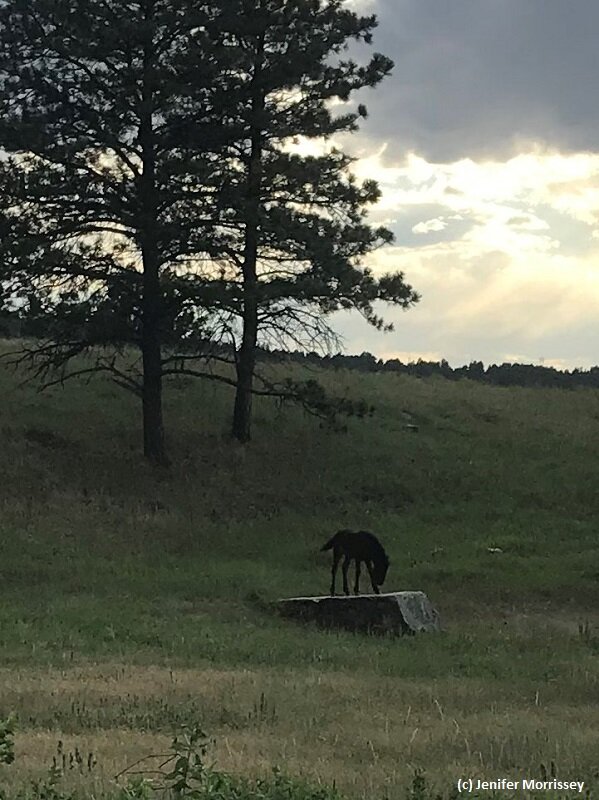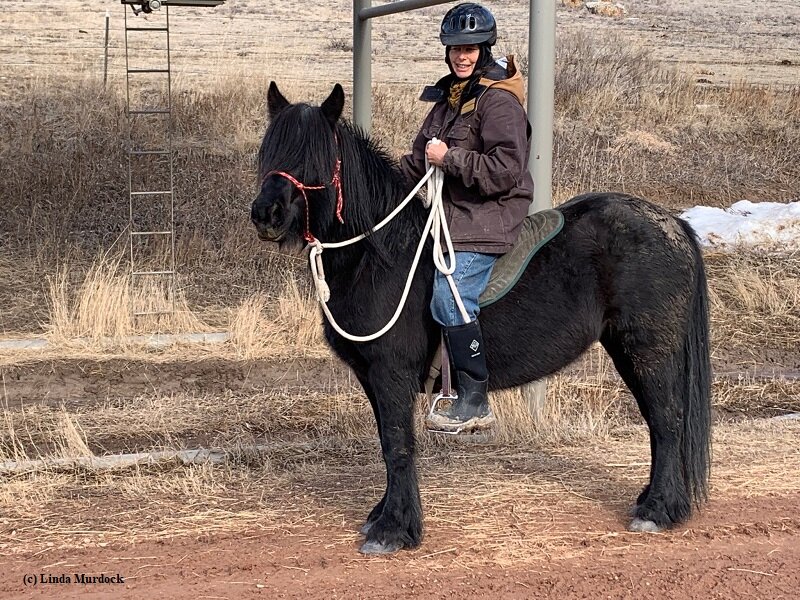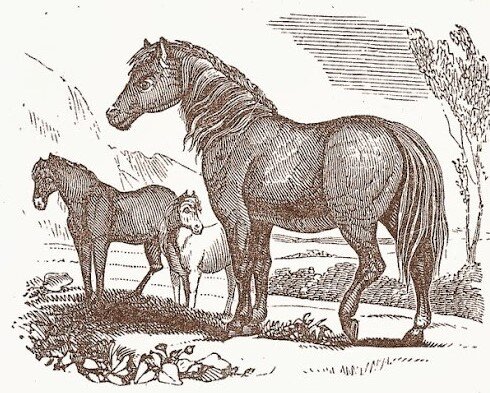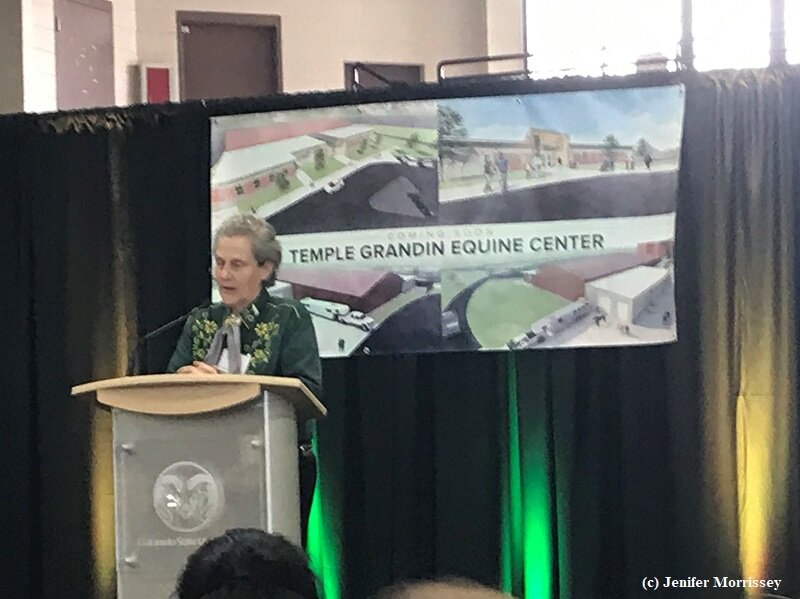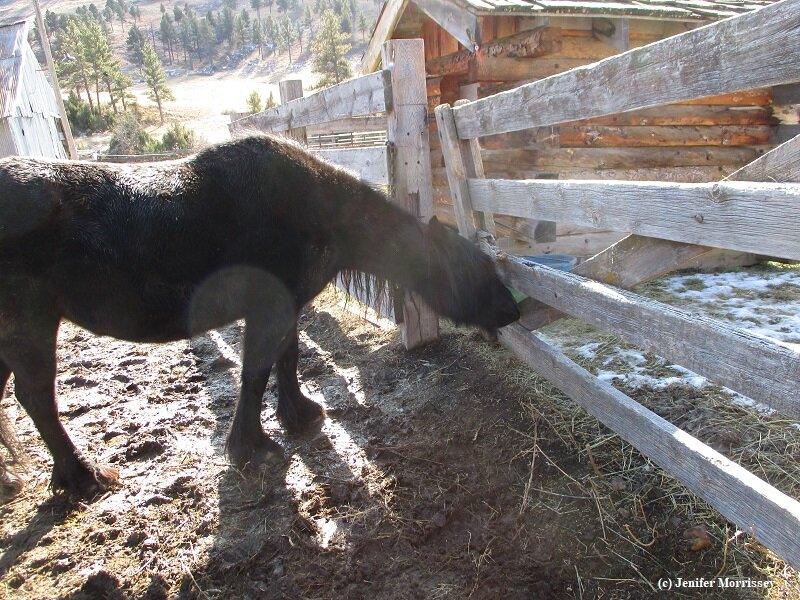Whenever I spend time with my ponies, there are small interactions we have or things I observe that touch me. Here are a few from the past month.
Salsify: This common weed was one of my first pony’s favorite snacks. I often gave the flower heads to her instead of treats. Mya is now in a loving home elsewhere, so when I saw a salsify plant and thought of her, I picked it and fed it to the pony here who was a friend of hers. Madie seemed to appreciate the gesture, if not the meaning!
Gratitude: It was four in the morning. I’d just come home from being up all night taking Asi to the hospital and seeing him settled there. The evening before I hadn’t been able to swap day ponies for night ponies, so after feeding the ponies in the paddocks, I pondered what to do. Dawn was just lightening the eastern sky and a near-full moon was still bright to the west, so I could see reasonably well. I looked over the fence into the pasture, and there was Pearl. I went to get her halter, and by the time I got back to the gate, Madie and Aimee had arrived, too. I put all three away for the ‘night,’ thankful that they had been so extremely cooperative when I was exhausted.
Aimee and Pearl: When Aimee was about a month old, she and her mom came to see me when I was at the barn. Three-year-old Pearl was also there and was the object of my attention; I needed to bring her into a paddock. I tied Aimee’s mom Madie then went to halter Pearl. Much to Madie’s frustration, Aimee started following me towards Pearl. Pearl was somewhat concerned about the fit Madie was throwing, but Aimee wasn’t bothered and walked right up to Pearl and sniffed noses. She didn’t do the typical ‘I am just a little foal’ mouthy submissive type of approach. She walked up as if she were the same size and age and introduced herself. I nearly fell over laughing! I thought to myself, you’re a confident little one, aren’t you! The next time I saw Aimee and Pearl, though, Aimee did approach more meekly.
Aimee Answers: This young pony is quite remarkable, so that’s why so many of these stories are about her. One late afternoon I went out to do chores, including swapping the day ponies for the night ponies. I was tired and I was hoping I wouldn’t have to do a lot of walking to find the ponies on the hill, but they were nowhere to be seen, so I wasn’t optimistic. As I was cleaning Asi’s stall, I sent out a silent message to my hill ponies that it would be really helpful if they would make their whereabouts known so I could easily find them. The next thing I knew, there was a whinny nearby. At first I didn’t see any ponies, until I realized it was little Aimee behind the fence at the waterer answering my request. What a pony!
Aimee on the Rock: One night when I was bringing Madie and Aimee in, I stopped next to a prominent rock. It’s a flat hunk with a slight slant to it and a surface of about five feet by twelve feet. Sometimes I call it my inversion table, a natural version of a healing tool I recently learned about from my chiropractor, because it’s big enough to lie down on. That night as we paused there, Aimee walked past me and out onto the rock. I was surprised at her confidence to just walk out on the slightly irregular surface. I hurriedly took a picture of this unusual behavior, but it didn’t come out very well because she lost interest and hopped off to go elsewhere. Then the other night, I was bringing Madie and Aimee in again past that rock, but this time Aimee was quite a ways behind us. When I realized she wasn’t with us, I turned around, and there she was, standing on the rock. This time I had plenty of time for pictures!
© Jenifer Morrissey, 2020
